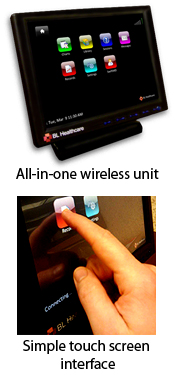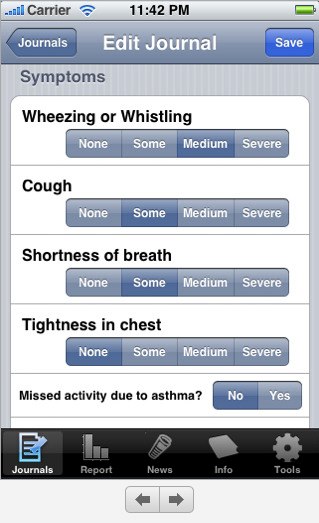Last year was a big one for mobile health. By mid-year especially spirits were high and many companies made mobile health related announcements, deals, launches and the like. Here's a run-down of three big stories (about Verizon, Google, Vitality) that took place one year ago this week in a new MobiHealthNews segment we call Mobile Health 20/20.
Verizon Wireless helps subscribers get in shape

Then: This time last year, Verizon Wireless published a press release that began: "Summer is ending and there is no better time to begin healthy habits. Verizon Wireless customers can access multiple applications that help them stay healthy and in shape using their wireless phones." Some of the apps Verizon Wireless promoted had been around for a number of years: Bones in Motion, Diet Fitness Diary, The Pill Phone, Healthy Body and Howcast. Unlike most iPhone, Android or BlackBerry apps, Verizon Wireless' apps cost upwards of $5.99 per month in subscription fees.
Now: Verizon Wireless has since announced a deal with BL Healthcare that sees BL as a core ecosystem developer for a new suite of home health applications that work on BL's wireless-enabled touch screen display unit. In October, Verizon Wireless announced that it was now offering an application for home health care workers called OnCare, that was developed by Xora. The mobile carrier also announced last November that it was piloting mobile video consultations with a care provider group in New Jersey. At the HIMSS event this year one of Verizon Wireless' parent companies, Verizon, announced that its business group had launched a transcription network that would enable mobile health information exchange in the future.
Conclusion: In a short year's time Verizon Wireless and its parent company have made great strides to develop their mobile health initiatives.
Vitality's GlowCaps go direct-to-consumer
 Then: This time last year, Cambridge, Massachusetts-based Vitality announced the commercial availability of its wireless Internet-enabled pill caps product, GlowCaps, which fit popular prescription bottles and help remind people to take their medications. GlowCaps became available mid-August 2009 on Amazon.com for $99.
Then: This time last year, Cambridge, Massachusetts-based Vitality announced the commercial availability of its wireless Internet-enabled pill caps product, GlowCaps, which fit popular prescription bottles and help remind people to take their medications. GlowCaps became available mid-August 2009 on Amazon.com for $99.
Now: In October AT&T announced that it would provide the wireless connectivity for GlowCaps text message alerts and automated phone call reminders. In January 2010 Vitality announced that “four of the top pharmaceuticals companies have committed to distribute their medications for hypertension, transplants and diabetes in GlowCaps.” Come March St. Louis-based pharmacy benefit manager Express Scripts said it was set to launch a national pilot for Vitality’s GlowCap pill reminder device. Most recently, Partners Healthcare’s Center for Connected Health announced that Vitality’s GlowCap service raised medication adherence by 27 percent for a group of hypertensive patients. The group using GlowCaps achieved 98 percent adherence, while another group using GlowCaps plus financial incentives hit 99 percent adherence.
Conclusion: On all fronts: Tech, business and efficacy, Vitality has been busy these past 12 months.
Google Health's first integrated app
 Then: Application developer company Ringful announced that its newest application, Asthma Journal, is now available for the iPhone platform. The company also claims it's the first app to integrate with the Google Health personal health record. The application is free. Asthma Journal enables uses to track and report whether they are wheezing, coughing or tight in the chest. The user also tracks the severity of its their symptoms. The app then sends the entries to the user's Google Health account so the patients, caregivers and/or physicians can review the data in aggregate.
Then: Application developer company Ringful announced that its newest application, Asthma Journal, is now available for the iPhone platform. The company also claims it's the first app to integrate with the Google Health personal health record. The application is free. Asthma Journal enables uses to track and report whether they are wheezing, coughing or tight in the chest. The user also tracks the severity of its their symptoms. The app then sends the entries to the user's Google Health account so the patients, caregivers and/or physicians can review the data in aggregate.
Now: In October Google Health's former director, Adam Bosworth, launched his own consumer health platform: Keas. At the HIMSS event in March, Google announced a deal with SureScripts and also an integration deal with the wireless-enabled WiScale that enabled WiScale users to port their weight, BMI and body fat percentage into their Google Health accounts. By June, however, the import of Google Health and other PHR platforms was called into question: "Nowhere on the terrain do I see a single vendor for a freestanding PHR taking hold! It’s time to stop looking for the turnkey PHR and start realizing that the idea of a single PHR as the sole point of intersection for all data, services, and visualization tools needed by a lay person to manage his or her health is so 1999." In the past few months, Google has inked GH integration deals with other mobile health companies, including Healthagen for its iTriage app.
Conclusion: It's been a sometimes sleepy, sometimes rocky 12 months for Google Health.


















